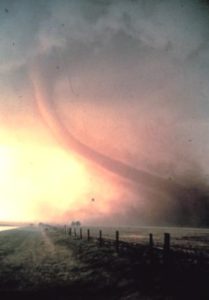In 2007 and 2008, when the bottom fell out of the economy as well as many people’s jobs and careers, it set in motion a slew of factors that have led to a set of conditions that pundits have recently termed “VUCA” (an acronym for volatility, uncertainty, complexity and ambiguity). If you haven’t heard about it, no worries; you’ll likely see more references to it in the future. Strictly speaking, the pundits didn’t invent the term; its origins are found in the U.S. Army War College, where it was used in the early 1990s to describe the world, post-Soviet Union collapse. If you’ve been in the workforce, and moreover, if you’ve been a leader since 2007/8, you know there’s been a similar collapse of the workplace/ career/ workforce. In short, stability has ended.
Here are some contributors to the whirlwind that many leaders are experiencing (with some suggested plans of action in our next issue):
1st “VUCA” contributor: Significantly increased span of control and responsibility.
Following the crash of 2007/8, 3 jobs became 2 jobs. As companies re-organized, jobs were consolidated, and people’s responsibilities and spans of control expanded considerably. And notwithstanding the gradual recovery of the economy, 2 jobs have not returned to the original 3 jobs. In large part, this is due to the next VUCA contributor.
Employees’ doing more.
Fear of job loss is a great motivator, and for many, following the 2007/8 crash, it was heads down and keep moving forward. Few complained about increased hours and/or expanded workloads. After seeing or hearing about colleagues who were downsized, they were grateful to have a job. And the lack of job hopping still persists to some extent today, in some part due to the next contributor.
Expectations have increased for employees and new hires.
As the economy went into a tailspin, companies pulled back on their training and development. New hires and existing employees were soon expected to already possess the needed skills to succeed in their roles. And that remains the case today, as many companies are looking to hire “ready-now” candidates. Although some companies still hire for general aptitude and capabilities, many require applicants and incumbents to already possess the specific needed skills and capabilities for their expanded roles.
Leaders managed to keep up with the expanded workload, heightened pace, and rising expectations because of the next contributor. However, this contributor has also been a leading cause of the expanded workload, heightened pace and rising expectations. Mobile technology allows us to be on and be productive 24/7, 365.
Telecommuting used to mean that people were able to work from their home or other location, instead of being at a dedicated office space. With mobile technology, there is no longer a clearly defined workspace, no distinction between home and the office. Mobile technology has allowed for the truly mobile office, the mobile workspace. People are no longer telecommuting; we are ever-commuting. More accurately, the employee is now the walking workspace, with no clear boundaries between what is the office and what is home.
Whether you call it VUCA, the end of stability, or the new world of work, ever since the crash of 2007/8, leading and managing others has become a lot more “dynamic”. In our next 60-Second Read, we’ll discuss some potential responses to avoid being consumed by the VUCA vortex.
Sign up for The Advisory Alliance 60-Second Read
Categories
- board of directors
- career
- career development
- change
- coaching
- communication
- compensation
- conflict
- consulting
- critical thinking
- culture
- decision-making
- education
- experiential learning
- feedback
- high potential
- hr
- immigration
- influence
- innovation
- jobs
- knowledge economy
- leadership
- leadership development
- leadership style
- learning
- management
- management development
- motivation
- selection
- self-actualization
- skills shortage
- succession planning
- talent development
- talent management
- time management
- uncategorized

